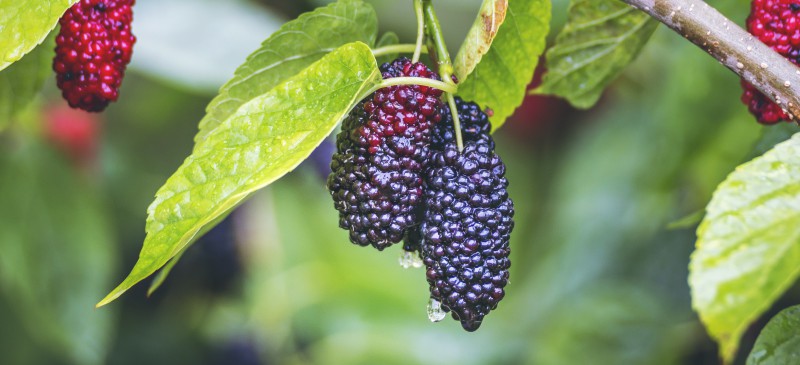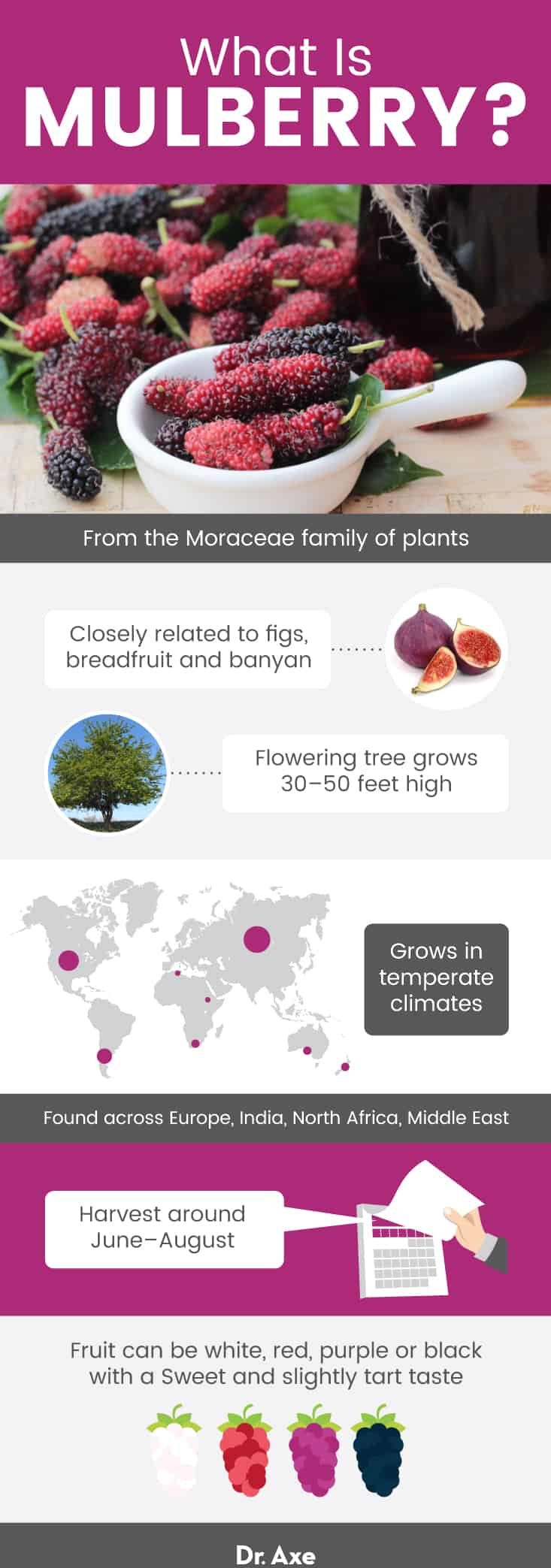This Dr. Axe content is medically reviewed or fact checked to ensure factually accurate information.
With strict editorial sourcing guidelines, we only link to academic research institutions, reputable media sites and, when research is available, medically peer-reviewed studies. Note that the numbers in parentheses (1, 2, etc.) are clickable links to these studies.
The information in our articles is NOT intended to replace a one-on-one relationship with a qualified health care professional and is not intended as medical advice.
This article is based on scientific evidence, written by experts and fact checked by our trained editorial staff. Note that the numbers in parentheses (1, 2, etc.) are clickable links to medically peer-reviewed studies.
Our team includes licensed nutritionists and dietitians, certified health education specialists, as well as certified strength and conditioning specialists, personal trainers and corrective exercise specialists. Our team aims to be not only thorough with its research, but also objective and unbiased.
The information in our articles is NOT intended to replace a one-on-one relationship with a qualified health care professional and is not intended as medical advice.
Mulberry: The Fruit that Protects Your Heart & Liver
September 24, 2018

There’s a pretty good chance that you’ve seen a mulberry tree or two pop up in your local park, neighborhood or even your own backyard. This tree produces a tart and tasty fruit that looks similar to a blackberry and can be used to sweeten up just about any dish.
The mulberry fruit may be tiny, but it provides some pretty big health benefits. It can aid in weight loss, keep your liver healthy, and even provide a hefty dose of vitamins and minerals with each serving.
Next time you spot this superfruit in your farmer’s market or backyard, give it a try and enjoy its unique flavor and nutritious properties.
What Is Mulberry?
The mulberry tree comes from the Moraceae family of plants and is closely related to figs, breadfruit and banyan.
This flowering tree grows quickly at first but will typically only reach between 30 and 50 feet in height. Mulberry trees tend to grow in temperate climates, are harvested around June through August, and can be found around the world across Europe, India, North Africa and the Middle East.
The trees produce a long, cylindrical fruit that can be white, red, purple or black depending on the type of tree. They are sweet and slightly tart, though the flavor can vary. White mulberry, for example, has a sweeter taste and is less tart than black or red mulberry fruits.
The fruits of the mulberry plant can be baked into desserts or added to yogurts and smoothies to enhance the flavor and kick up the nutrient profile.
Mulberry is high in many important nutrients and has been shown to have a variety of health benefits, from reducing cholesterol levels to keeping blood sugar steady.
Health Benefits
1. May Help Fight Cancer
Like other types of berries, mulberries are considered one of the top cancer-fighting foods. This is due to their impressive content of antioxidants, which are compounds that help fight off harmful free radicals and protect cells from damage.
A study conduced in Japan found that mulberry juice was able to effectively reduce levels of oxidative damage caused by free radicals in mice. (1) Another 2006 animal study had similar findings, noting that mulberry juice acted as an antioxidant and reduced stress caused by these cancer-causing free radicals. (2)
In 2017, researchers from Korea isolated a specific compound from mulberries and found that it was able to induce cell death in breast cancer cells and slow the growth and spread of tumor cells in mice. (3)
Other antioxidant-rich foods that can help fight damage caused by free radicals and may help prevent cancer include other berries, vegetables, and certain herbs like turmeric and cinnamon.
2. Promotes Weight Loss
Mulberries are a nutrient-dense food. This means that they are low in calories but contain a good amount of several nutrients, including fiber, vitamin C, vitamin K and iron.
Fiber, in particular, can help promote digestive health, treat constipation and even aid in weight loss. Just one cup of mulberries can meet up to 10 percent of your daily fiber needs. When you eat dietary fiber, it moves through your gastrointestinal tract undigested. This adds bulk to stool and enhances satiety, keeping you feeling fuller for longer to reduce your appetite. (4)
Some research even suggests that mulberries could have an anti-obesity effect. An animal study in the Journal of Agricultural and Food Chemistry showed that treating hamsters with mulberry water extract for 12 weeks lowered both body weight and visceral fat. (5)
For a low-calorie, healthy snack that will satisfy your sweet tooth and keep your calorie intake low, try topping a cup of high-protein Greek yogurt with some tasty mulberries.
3. Decreases Cholesterol Levels
The fiber found in mulberries is mostly insoluble fiber, but it also contains about 25 percent soluble fiber in the form of pectin. (6) Soluble fiber is a type of fiber that can absorb water and has been shown to help reduce cholesterol levels and decrease the risk of heart disease. (7, 8, 9)
The properties of mulberry itself may also have a favorable effect on weight. A study in the Journal of Food Science found that the compounds in mulberry helped prevent the oxidation of LDL cholesterol, one of the major risk factors of heart disease. (10)
In the animal study from the Journal of Agricultural and Food Chemistry mentioned above, giving hamsters mulberry water extract helped decrease levels of both triglycerides and cholesterol.
In addition to mulberries, you should also eat plenty of high-fiber foods and foods rich in omega-3 fatty acids to help lower cholesterol levels naturally.

4. Protects Liver Health
Your liver plays a central role in your overall health. It is involved in blood clotting, breaking down fats and filtering out toxins.
Some evidence shows that certain compounds found in mulberries could have a beneficial effect on liver health, helping keep this important organ healthy, strong and free of liver disease. Mulberries may be especially effective in the prevention of fatty liver disease. This is a condition in which fat builds up in the liver and impairs its ability to work properly.
A 2013 test-tube study showed that the compounds in mulberries helped block fat formation, prevented fat accumulation and also promoted the clearance of fat out of the liver. (11) Another study from Taiwan confirmed these findings, demonstrating that mulberry extract increased fat breakdown and decreased fatty acid formation. (12)
Of course, the beneficial compounds found in mulberries are just one piece of the puzzle. Following a healthy diet, exercising regularly and limiting alcohol consumption are all crucial components of liver health.
5. Stabilizes Blood Sugar Levels
High blood sugar can result in a wide range of symptoms, including increased thirst, frequent urination and blurry vision. Keeping your blood sugar levels under control is key to maintaining better health, especially if you have diabetes.
Mulberries contain fiber, which helps slow the absorption of sugar in the bloodstream to prevent blood sugar spikes. They also contain specific compounds and antioxidants that have been shown to benefit blood sugar levels.
A study in PLoS One found that mulberry extract was able to significantly lower blood sugar levels in diabetic mice. (13) In another study, diabetic rats were given mulberry extract for five weeks, and their blood sugar was measured. Between the first and last day of the study, their blood sugar had dropped from 252 mg/dL all the way down to 155 mg/dL. (14)
Keep in mind that mulberries should be consumed as part of a healthy, carb-controlled diet to help maintain normal blood sugar.
Nutrition Facts
Mulberries are low in calories but can provide plenty of fiber, vitamin C, vitamin K and iron.
One cup of mulberries contains approximately: (15)
- 60.2 calories
- 13.7 grams carbohydrates
- 2 grams protein
- 0.5 gram fat
- 2.4 grams dietary fiber
- 51 milligrams vitamin C (85 percent DV)
- 10.9 micrograms vitamin K (14 percent DV)
- 2.6 milligrams iron (14 percent DV)
- 272 milligrams potassium (8 percent DV)
- 0.1 milligram riboflavin (8 percent DV)
- 1.2 milligrams vitamin E (6 percent DV)
- 25.2 milligrams magnesium (6 percent DV)
- 53.2 milligrams phosphorus (5 percent DV)
- 54.6 milligrams calcium (5 percent DV)
In addition to the nutrients listed above, mulberries also contain some copper, niacin, vitamin B6 and thiamine.
Mulberry vs. Breadfruit vs. Jackfruit
Breadfruit and jackfruit are two plant species that are closely related to mulberries and belong to the same plant family. However, they are much different than mulberries in taste, appearance and even texture.
Jackfruit is a large, yellow fruit with a mild flavor that’s easily incorporated into just about any type of dish. Because of its unique stringy texture, it’s also often used as a vegetarian substitute for pulled pork or chicken.
Breadfruit, on the other hand, is green, bumpy and starchy with a taste and texture similar to potatoes when cooked. Thanks to its incredible versatility, this tropical fruit is a staple ingredient in the Caribbean, Hawaii and Central America and can be added to everything from cakes to pastas.
Mulberries are also often confused with blackberries. However, when comparing mulberries vs. blackberries, there are many notable differences. Blackberries are grown in bushes, belong to an entirely different family of plants, have a more round shape and contain over three times the fiber. Still, both are low in calories and high in nutrients like vitamin C and vitamin K.
Where to Find
If you’ve spotted a mulberry fruit tree in your neighborhood, you can pick the fruit straight from the tree or lay down a blanket and give the branches a good shake to make the ripe berries fall right off. Of course, make sure to wash them before eating.
Unfortunately, mulberries don’t travel well, so you’re unlikely to find them fresh at the grocery store. However, you may still be able to pick up a batch at your local farmer’s market, and dried forms of mulberries are widely available both online or at many stores.
Keep in mind that mulberries don’t last long after they’re picked, so be sure to eat up quickly once they’re picked or freeze them to help extend their shelf life by several months.

Recipes
Mulberries are juicy, refreshing and tart and can be used in just about any recipe in place of other berry varieties.
You can use either fresh or dried mulberries as a delicious and nutritious addition to many different foods. Sprinkle them over yogurt to add some sweetness, or mix them into smoothies, baked goods and desserts. Mulberries can also be made into jams, ice creams or puddings.
Want even more ideas for how to use mulberry fruit? Here are some tasty mulberry recipes that you can try out:
- Raw Vegan Bliss Balls
- Mulberry Curd
- Spicy Apple and Mulberry Chutney
- Mulberry & Pistachio Fudge
- Vegan Superfood Breakfast Bars
History
Even if you’ve never even tried mulberries, there’s a good chance you at least recognize the name from the nursery rhyme “Here We Go Round the Mulberry Bush.” Of course, this is a misleading and inaccurate title considering that mulberries actually grow on trees.
You may have also heard of mulberries from the story of Pyramus and Thisbe. In this story, two next-door neighbors turned lovers are forbidden from getting married because of their parents’ rivalry. They arrange to meet under a mulberry tree to confess their love. However — spoiler alert! — due to a misunderstanding, Pyramus believes Thisbe was killed by a lion and ends up stabbing himself Romeo and Juliet-style with his red blood staining the white mulberries.
Historically, mulberry trees were an essential part of the silk industry, as mulberry tree leaves are the main source of food for silkworms. In fact, in the 17th century, King James I imported 100,000 mulberry trees from all over Europe in hopes of increasing silk production in Great Britain. However, his project failed when he accidentally ordered black mulberries instead of the white mulberries that produce the leaves eaten by silkworms.
Today, some cities in North America have actually banned the growth of mulberry trees because of the large amount of pollen they produce. Interestingly enough, however, the male trees produce pollen while female trees grow flowers that draw pollen and dust from the air.
Still, mulberry trees remain widespread and can be found across the country and around the globe, producing their delicious fruits that are full of health benefits.
Risks and Side Effects
Although rare, some people may experience an allergic reaction to mulberries. There have also been reports of reactions in those who are sensitive to birch pollen due to cross-reactivity. (16) If you experience any mulberry fruit side effects, you should discontinue use and talk to your doctor.
However, for most people without sensitivities, mulberries can be a nutritious addition to the diet and can come with many benefits to health. Enjoy, in moderation, as part of a well-rounded and balanced diet to take advantage of all the nutrients offered by this tasty fruit.
Final Thoughts
- Mulberries are generally sweet with a tart flavor that works well in many different desserts and dishes.
- These berries are low in calories but can provide fiber, vitamin C, vitamin K and iron, along with several other important micronutrients.
- Studies have found that they may help prevent cancer, reduce cholesterol and blood sugar levels, aid in weight loss, and protect the health of your liver.
- Try adding mulberries in either fresh or dried form to yogurts, smoothies, desserts or jams for a tasty way to kick up the nutrient profile of your favorite foods.










